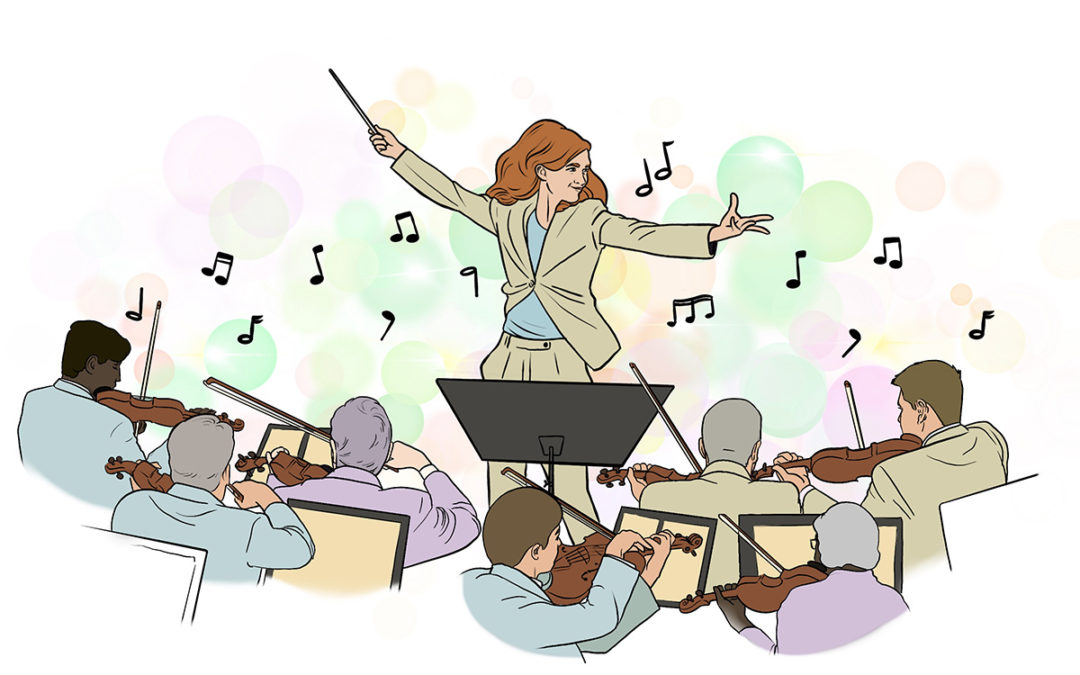
L'âge d'or du vieillissement assisté par cellules
L'âge d'or du vieillissement assisté par cellules
Retour vers le futur
Pour Mary, vieillir n'est pas mourir, c'est être handicapé. Adipose-Ddérivé Régénératrice Cells (ADRC), l'a ramenée dans le futur.
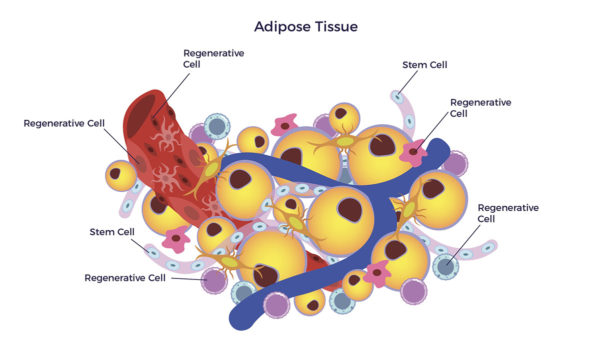
Au cours de l'été 2014, le médecin de Mary l'a admise à l'unité de soins intensifs de la Cleveland Clinic. Au bout de deux semaines, les médecins l'ont renvoyée chez elle avec une seule recommandation : Se préparer à l'hospice.
Quelques mois plus tard, AMBROSE Cell Therapy's Le groupe prédécesseur a traité Mary avec un nouveau protocole basé sur l'ADRC. Sept ans après ce seul traitement, Mary a fêté son 93e anniversaire avec des amis.
En 2021, Mary vivait de façon autonome, ses symptômes de Parkinson étaient légers par rapport à son niveau de référence et son humeur était bonne. [1] Elle faisait de l'exercice à la salle de sport quatre jours par semaine. Ses douleurs dorsales et sa sciatique ont disparu depuis longtemps.
La science-fiction devient réalité
Le célèbre auteur de science-fiction Ray Bradbury a peut-être prédit l'issue de Mary dans L'homme illustré, "Elle est allée retour vers le futurIl a ajouté : "Je suis sincère. Je suis sincère. C'était une vieille femme dans une petite maison au milieu du Wisconsin, quelque part pas très loin d'ici. Une vieille sorcière qui avait l'air d'avoir mille ans à un moment donné et vingt ans l'instant d'après, mais elle disait qu'elle pouvait voyager dans le temps. J'ai ri. Maintenant, j'en sais plus. "
Le remarquable revirement de Mary a transformé la science-fiction en réalité, comme c'est souvent le cas dans ce genre. Mais comment les ADRC de Mary l'ont-ils aidée à voyager dans le temps, en particulier face aux obstacles qui se dressaient contre elle ?
L'histoire de Mary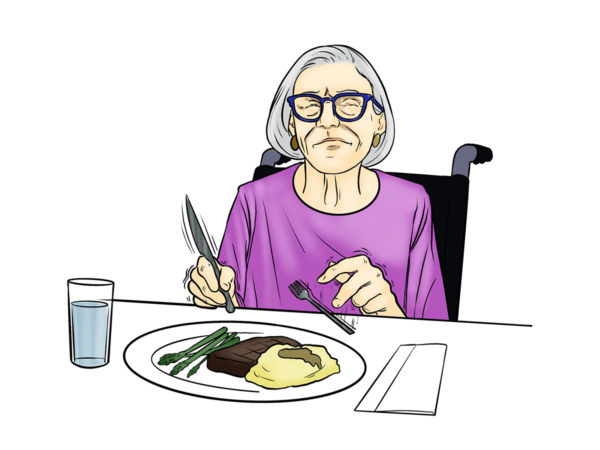 À l'âge de 86 ans, la maladie de Parkinson a handicapé, déprimé et blessé Mary. Des tremblements l'empêchent de se servir d'une fourchette et d'un couteau.
À l'âge de 86 ans, la maladie de Parkinson a handicapé, déprimé et blessé Mary. Des tremblements l'empêchent de se servir d'une fourchette et d'un couteau.
Elle vivait avec des douleurs chroniques au dos et une sciatique après une chute qui lui avait fracturé le dos en trois endroits. Mary dépendait de soins 24 heures sur 24 et 7 jours sur 7.
En mai 2014, Mary a assisté au mariage de sa petite-fille en fauteuil roulant. Selon son médecin traitant, "tous les invités faisaient des commentaires sur la détérioration de son état de santé et sur le fait qu'ils ne s'attendaient pas à ce qu'elle survive encore longtemps".
Après avoir passé deux semaines aux soins intensifs de la Cleveland Clinic, les médecins ont dit à Mary de mettre de l'ordre dans ses affaires. Tout cela l'a rendue dépressive et l'a amenée à penser au suicide.
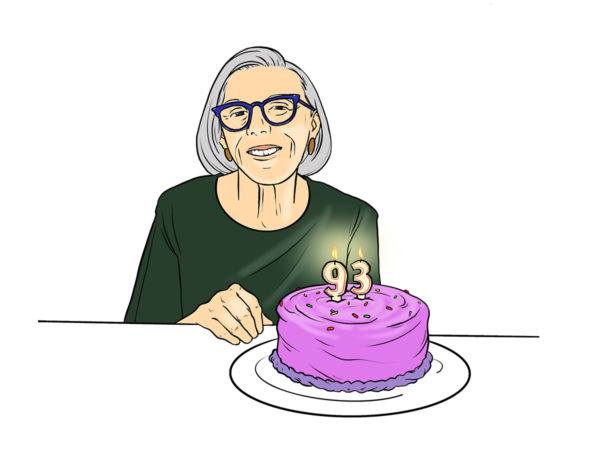 En octobre 2014, le groupe prédécesseur d'Ambrose a traité Mary avec un nouveau protocole basé sur l'ADRC, ce qui a déclenché son retour vers le futur. Sept ans après ce seul traitement, Mary a fêté son 93e anniversaire avec des amis.
En octobre 2014, le groupe prédécesseur d'Ambrose a traité Mary avec un nouveau protocole basé sur l'ADRC, ce qui a déclenché son retour vers le futur. Sept ans après ce seul traitement, Mary a fêté son 93e anniversaire avec des amis.
Elle vivait de façon autonome, ses symptômes de Parkinson étaient légers par rapport à la situation de référence et son humeur était bonne. Mary marchait sur le tapis roulant et s'entraînait à la salle de sport quatre jours par semaine. Ses douleurs dorsales et sa sciatique avaient disparu depuis longtemps.
Vivre jusqu'à 93 ans est une chose ; c'en est une autre que d'être actif et de profiter de la vie malgré tout.
L'avenir sombre du vieillissement
Jusqu'à ce que la thérapie cellulaire permette à Mary de se rétablir, elle partageait un avenir sombre avec plus de 100 millions d'adultes. Quatre adultes sur dix vivent avec deux maladies chroniques ou plus.
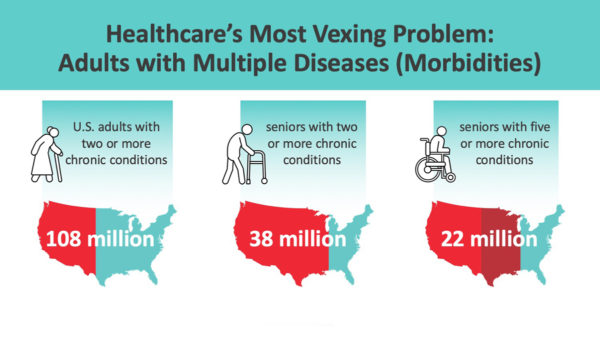 Avec l'âge, la situation devient désastreuse : La personne âgée moyenne consulte sept médecins et prend sept médicaments par an.
Avec l'âge, la situation devient désastreuse : La personne âgée moyenne consulte sept médecins et prend sept médicaments par an.
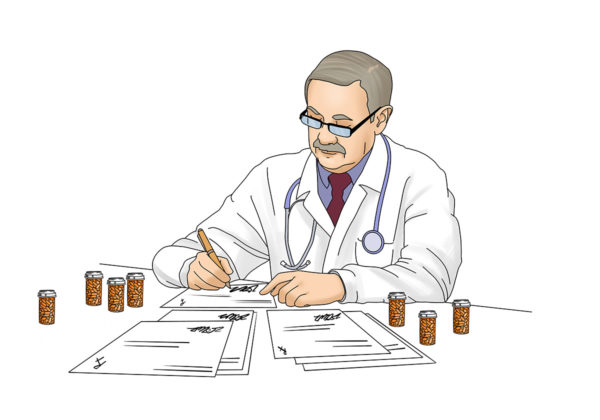
Relier les points
Au moment du traitement de Mary, les chercheurs en cellules souches n'avaient pas encore fait le lien entre les facteurs communs des affections liées à l'âge et les mécanismes cellulaires qui ont permis à Mary d'inverser de façon remarquable ses symptômes, ses fonctions et sa qualité de vie. Le secret d'un retour vers le futur réside dans cette relation.
En revenant vers le futur, nous comprenons maintenant que les ADRC de Mary ont respecté les lois de la nature. Mais comment ? Des recherches séculaires ont permis de trouver l'indice. Et la science et la technologie de l'ère nouvelle ont permis de percer le mystère. Nous y reviendrons plus tard, mais rattrapons d'abord le passé.
Retour à la nature - Physiologie et équilibre
Pour revenir à l'avenir, il faut revenir aux fondamentaux, à commencer par la physiologie. La physiologie plonge ses racines dans l'Inde, l'Égypte et la Grèce antiques.
- Hippocrate, le père de la médecine, a joué un rôle crucial dans l'introduction des quatre humeurs (fluides corporels). Son traité du Ve siècle avant J.-C., La nature de l'homme, définit la bonne santé comme l'état de santé d'une personne. équilibre et le mélange des humeurs, tandis que leur déséquilibre et leur séparation provoquent des maladies.
- Jean Fernel (1497-1558), médecin français, a introduit le terme "physiologie", du grec ancien, qui signifie "étude de la nature, des origines". En d'autres termes, la physiologie se réfère à l'organisation du corps humain. naturel les processus, les fonctions et les systèmes. Il a publié son livre La partie naturelle de la médecine en 1542.
- Dans les années 1870, Claude Bernard, un physiologiste français, a décrit la manière dont les organismes complexes doivent se maintenir en vie. équilibre dans leur environnement interne, ou "milieu intérieur,"mener une "vie libre et indépendante". dans le monde de l'au-delà.
- Cinquante ans plus tard, le physiologiste Walter Cannon a inventé le terme d'homéostasie, développant ainsi les travaux d'Hippocrate, de Fernel et de Bernard. Issu des mots grecs signifiant "même" et "stable", le terme homéostasie fait référence à l'équilibre physiologique nécessaire à la survie.
- En 1948, le biologiste Claude Shannon a rédigé la Magna Carta de l'ère de l'information, Théorie de l'information. Shannon a fait le lien entre les processus de signalisation de l'ADN et les communications numériques. [2] Son article a déclenché la révolution technologique. En d'autres termes, nos iPhones, nos ordinateurs et l'internet sont nés de la diaphonie cellulaire.
- Il a fallu attendre six décennies pour que les Arnold Caplan, Ph.D.chercheur en cellules souches à la Case Western University, pour relier la physiologie, l'homéostasie et la théorie de l'information à la biologie des cellules souches.
L'échec rentable de Big Pharma
En revanche, les grandes sociétés pharmaceutiques ignorent ces principes fondamentaux au profit de médicaments dont les risques sont souvent plus importants que les bénéfices. En voici un exemple, Le Dr Armon Neel Jr. met en garde contre le fait que dix classes de médicaments peuvent causer ou contribuer à la perte de mémoire, au brouillard cérébral et à la fatigue.
La médecine conventionnelle adhère au modèle "un médicament, une maladie" de Big Pharma. Les médecins prescrivent des produits pharmaceutiques qui suppriment le principal facteur à l'origine d'une maladie ou d'un symptôme. Cette approche n'a guère contribué à améliorer l'espérance de vie des patients atteints de maladies liées à l'âge. Et elle n'a pas fonctionné pour Mary non plus.
Dans le cas de Mary, elle prenait du Sinemet pour les tremblements, du Lyrica pour la douleur et des injections de cortisone pour la sciatique - au minimum. Les laboratoires pharmaceutiques gagnent beaucoup d'argent en prescrivant plusieurs médicaments (polypharmacie), mais la santé de Mary n'en a pas profité dans la même mesure, puisqu'elle a parlé de suicide, un effet secondaire connu du Lyrica et du Sinemet.
Le retour de Mary
Comme l'a dit sa fille 18 mois après le traitement de Mary, "pour son dos, les résultats ont été incroyables. Elle avait deux fractures au niveau des lombaires inférieures. Beaucoup de gens n'auraient jamais pu sortir du lit, mais elle a 87 ans et nous l'appelons l'enfant du retour. Elle se rend à la salle de sport presque tous les jours avec son entraîneur, qui doit parfois lui demander de baisser d'un ton pour qu'elle ne fasse pas trop d'efforts !
"En outre, elle marche maintenant très droit et ne traîne pas les pieds. De temps en temps, lorsqu'elle est fatiguée, elle s'écarte un peu, mais elle n'utilise pas de déambulateur ni de canne. Elle va vraiment très bien, et cela est dû en grande partie à la thérapie par cellules souches.
L'histoire de Mary est-elle un effet placebo ? Tout cela semble trop beau pour être vrai, mais d'autres Résultats rapportés par les patients démontrer que les avantages dont bénéficie Mary ne lui sont pas propres.
Combler le fossé
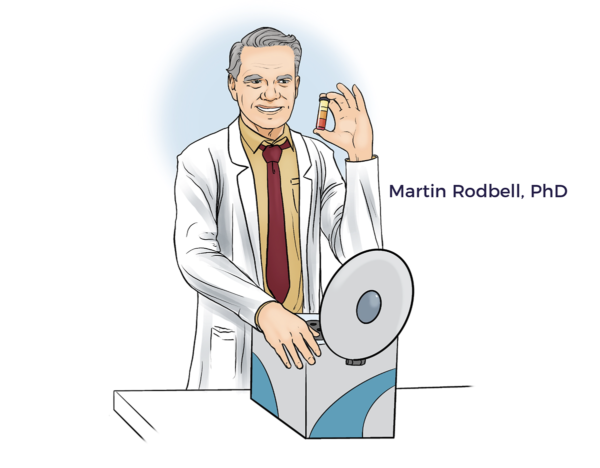 Au milieu des années 1960, Martin Rodbelllauréat du prix Nobel de physiologie ou de médecine, a isolé une population mixte de cellules régénératrices dans la graisse ou le tissu adipeux, appelée fraction vasculaire stromale (SVF). Stroma signifie tissu conjonctif (graisse). La fraction est la fraction cellulaire libérée de la paroi externe des vaisseaux entremêlés dans la graisse.
Au milieu des années 1960, Martin Rodbelllauréat du prix Nobel de physiologie ou de médecine, a isolé une population mixte de cellules régénératrices dans la graisse ou le tissu adipeux, appelée fraction vasculaire stromale (SVF). Stroma signifie tissu conjonctif (graisse). La fraction est la fraction cellulaire libérée de la paroi externe des vaisseaux entremêlés dans la graisse.- En 1991, Arnold Caplan, Ph.D., a envisagé "l'émergence d'un nouveau paradigme thérapeutique".L'autoréparation cellulaire". Le Dr Caplan a émis l'hypothèse que les cellules souches adultes d'une personne, qu'il a appelées cellules souches mésenchymateuses (CSM), pourraient être utilisées pour réparer des tissus et des organes malades.
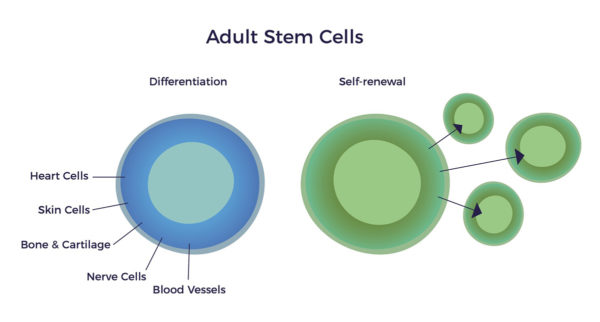
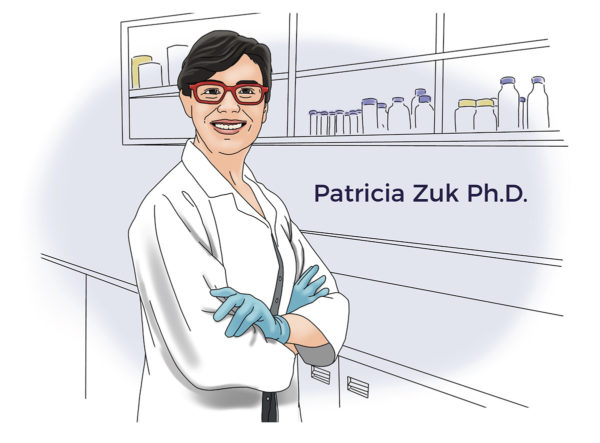 Dix ans plus tard, Patricia Zuk et al., chercheurs à l'UCLA, ont découvert la source la plus accessible, la plus abondante et la plus puissante de CSM : le tissu adipeux. Le groupe de Zuk a comblé le fossé entre la science séculaire de la physiologie et la médecine nouvelle des ADRC.
Dix ans plus tard, Patricia Zuk et al., chercheurs à l'UCLA, ont découvert la source la plus accessible, la plus abondante et la plus puissante de CSM : le tissu adipeux. Le groupe de Zuk a comblé le fossé entre la science séculaire de la physiologie et la médecine nouvelle des ADRC.- Dix ans après la découverte du laboratoire de Zuk, le Dr Caplan a rebaptisé les CSM "cellules de signalisation médicinale", reliant la physiologie, l'homéostasie, la signalisation de l'ADN et la biologie des cellules souches.
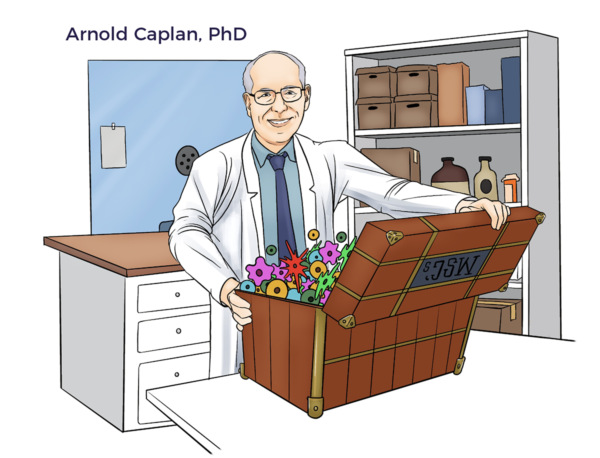 Les ADRC contiennent de l'ADN dans le noyau de chaque cellule. Elles adhèrent donc au cadre de la cellule de signalisation médicinale de Caplan.
Les ADRC contiennent de l'ADN dans le noyau de chaque cellule. Elles adhèrent donc au cadre de la cellule de signalisation médicinale de Caplan.- En 2012, le Dr James Willerson et le Dr Emerson Perin du Texas Heart Institute ont publié Achat d'une nouvelle âme. Ils ont proposé que le tissu adipeux soit la meilleure source de cellules souches adultes et de cellules régénératrices, et ont fait le lien entre Retour vers le futur de Bradbury et l'efficacité des ADRC à un stade avancé de la vie. En d'autres termes, le tissu adipeux protège ces cellules de l'épuisement redouté des cellules souches.
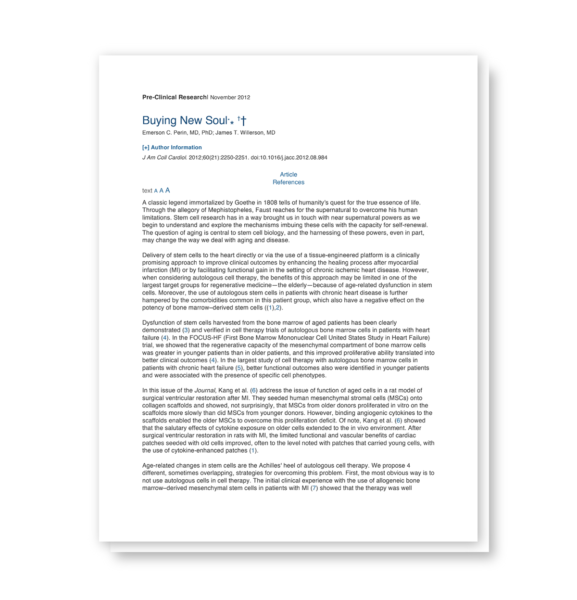
Au cours des 22 dernières années, les chercheurs ont notamment publié plus de 85 000 articles discutant des cellules souches dérivées de l'adipeuse (ADSC). Cela représente une moyenne de 11 nouvelles publications par jour. Plus impressionnant encore, le rythme de publication s'est accéléré pour atteindre 36 articles par jour, soit près de quatre fois la moyenne historique.
L'âge d'or du vieillissement assisté par les cellules ?
Le vieillissement constitue l'apparition soudaine ou générale de multiples déséquilibres physiologiques ou d'une dysrégulation multisystémique. Les symptômes de Marie en sont un bon exemple.
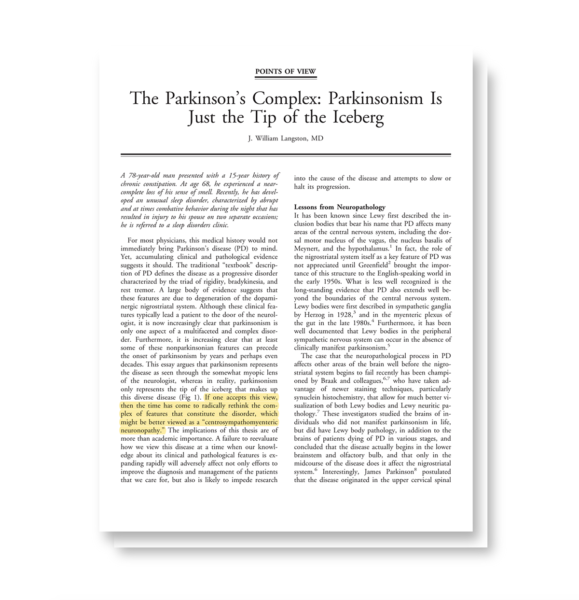 En 2006, le Dr William Langston, premier directeur scientifique de la Fondation Michael J. Fox, a publié un ouvrage intitulé Le complexe de la maladie de Parkinson : Le parkinsonisme n'est que la partie émergée de l'iceberg. [3] En bref, l'article fondateur du Dr Langston affirme que la MP ne se résume pas à la perte de neurones producteurs de dopamine dans le cerveau.
En 2006, le Dr William Langston, premier directeur scientifique de la Fondation Michael J. Fox, a publié un ouvrage intitulé Le complexe de la maladie de Parkinson : Le parkinsonisme n'est que la partie émergée de l'iceberg. [3] En bref, l'article fondateur du Dr Langston affirme que la MP ne se résume pas à la perte de neurones producteurs de dopamine dans le cerveau.
Au contraire, le parkinsonisme implique des défaillances multisystémiques. C'est pourquoi il a déclaré : "Au contraire, nous devons traiter tous les aspects de la maladie si nous voulons modifier son évolution d'une manière qui améliore réellement la vie de nos patients à long terme.“
De même, les chercheurs établissent un lien entre les influences systémiques négatives et l'insuffisance cardiaque, les maladies rénales, la maladie d'Alzheimer, le diabète, etc.
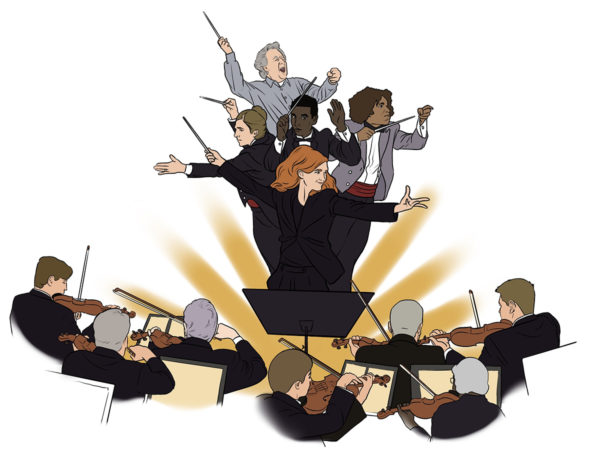 En résumé, à mesure que nous vieillissons, nos cellules, nos tissus, nos organes et nos systèmes perdent leur harmonie. [4] [5] [6] Au lieu de cela, plusieurs chefs d'orchestre dirigent l'orchestre en fonction de leurs interprétations respectives de la partition.[7] [8] [9] [10] [11]
En résumé, à mesure que nous vieillissons, nos cellules, nos tissus, nos organes et nos systèmes perdent leur harmonie. [4] [5] [6] Au lieu de cela, plusieurs chefs d'orchestre dirigent l'orchestre en fonction de leurs interprétations respectives de la partition.[7] [8] [9] [10] [11]
En d'autres termes, nos systèmes immunitaire, vasculaire, nerveux et autres donnent des instructions dissonantes à nos cellules, tissus et organes. En d'autres termes, la dysharmonie multisystémique est le facteur primordial qui sous-tend les symptômes de Mary. [12] [13] [14] [15] [16]
Après son traitement unique, les ADRC de Mary ont rétabli l'harmonie physiologique.
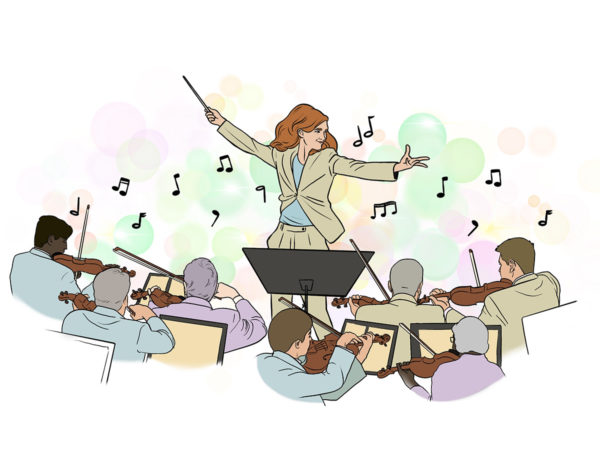 En termes scientifiques, ses cellules réparatrices ont sécrété des centaines de facteurs de guérison, ou facteurs trophiques, qui ont signalé aux cellules résidentes de recommencer à jouer selon sa partition musicale.
En termes scientifiques, ses cellules réparatrices ont sécrété des centaines de facteurs de guérison, ou facteurs trophiques, qui ont signalé aux cellules résidentes de recommencer à jouer selon sa partition musicale.
En d'autres termes, le cadre de la cellule de signalisation médicinale du Dr Caplan a donné de meilleurs résultats que ce qu'il avait supposé. Le dialogue cellulaire entre les CSM et les cellules résidentes a rétabli l'homéostasie multisystémique.
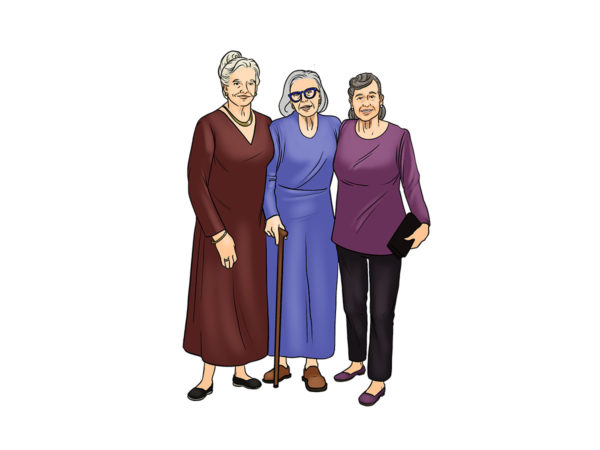 Dans la réalité, l'humeur, l'énergie, le contrôle moteur, l'équilibre et le score de douleur de Marie sont restés améliorés pendant plus de sept ans.
Dans la réalité, l'humeur, l'énergie, le contrôle moteur, l'équilibre et le score de douleur de Marie sont restés améliorés pendant plus de sept ans.
De plus, le résultat de Mary a validé l'hypothèse du Dr Langston de 2006. Plus important encore, Mary, ses amis et sa famille ont apprécié son retour vers le futur.
[2] Schneider T A brief review of molecular information theory Nano Commun Netw. 2010 September ; 1(3) : 173-180
[3] Langston J W Le complexe de Parkinson : Le parkinsonisme n'est que la partie émergée de l'iceberg Annals of Neurology Vol 59 No 4 Avril 2006
[4] Takuya Kishi L'insuffisance cardiaque en tant que dysfonctionnement du système nerveux autonome Journal of Cardiology (2012) 59, 117-122
[5] Sági B et al Le rôle pronostique de la récupération de la fréquence cardiaque après l'exercice et le syndrome métabolique dans la néphropathie IgA BMC Nephrology (2021) 22:390
[6] McCaulley M et Grush K Alzheimer's Disease : Exploring the Role of Inflammation and Implications for Treatment International Journal of Alzheimer's Disease Volume 2015, Article ID 515248,
[7] Kelleher R, Soiza R Evidence of endothelial dysfunction in the development of Alzheimer's disease (Dysfonctionnement endothélial dans le développement de la maladie d'Alzheimer) : La maladie d'Alzheimer est-elle un trouble vasculaire ? Am J Cardiovasc Dis 2013;3(4):197-226
[8] Dantzer R. Neuroimmune Interactions : Du cerveau au système immunitaire et vice versa. Physiol Rev. 2018;98(1):477-504.
[9] Amiya E MD PHD et al The Relationship between Vascular Function and the Autonomic Nervous System Ann Vasc Dis Vol. 7, No. 2 ; 2014 ; pp 109-119 Mois en ligne 16 mai 2014
[10] Tracey K Le réflexe inflammatoire Nature Vol 420 19/26 Décembre 2002
[11] Simora N et al. The Role of the Immune System in Metabolic Health and Disease Cell Metabolism 25, March 7, 2017
[12] Kelleher R, Soiza R Evidence of endothelial dysfunction in the development of Alzheimer's disease (Dysfonctionnement endothélial dans le développement de la maladie d'Alzheimer) : La maladie d'Alzheimer est-elle un trouble vasculaire ? Am J Cardiovasc Dis 2013;3(4):197-226
[13] Dantzer R. Neuroimmune Interactions : Du cerveau au système immunitaire et vice versa. Physiol Rev. 2018;98(1):477-504.
[14] Amiya E MD PHD et al The Relationship between Vascular Function and the Autonomic Nervous System Ann Vasc Dis Vol. 7, No. 2 ; 2014 ; pp 109-119 Mois en ligne 16 mai 2014
[15] Tracey K Le réflexe inflammatoire Nature Vol 420 19/26 Décembre 2002
[16] Simora N et al. The Role of the Immune System in Metabolic Health and Disease Cell Metabolism 25, March 7, 2017
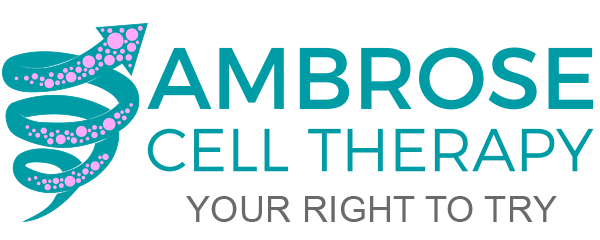
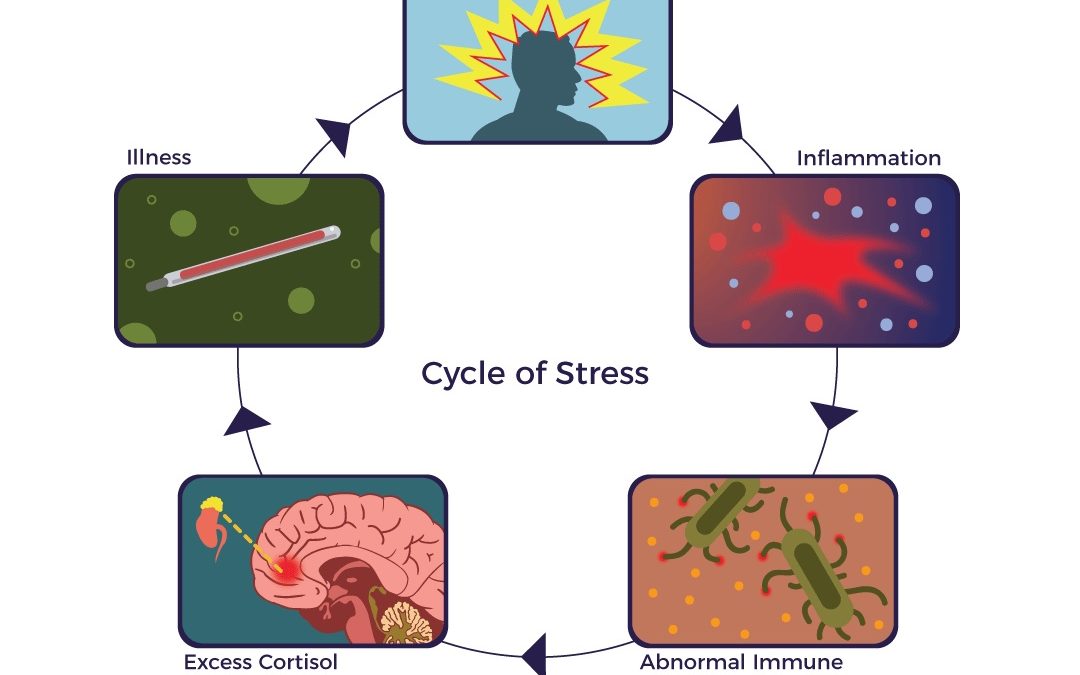

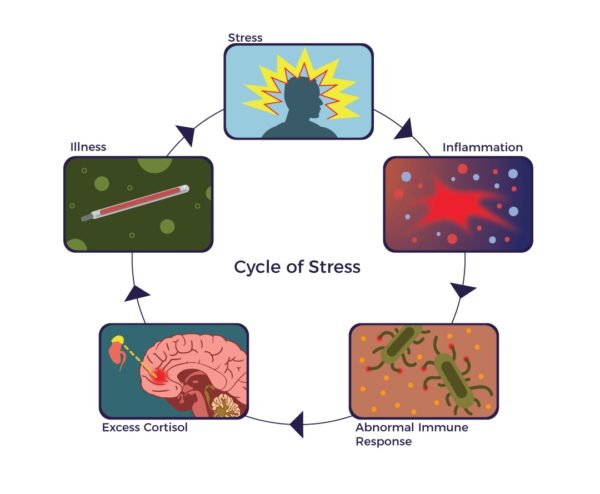 Quelles sont les causes d'une poussée ?
Quelles sont les causes d'une poussée ?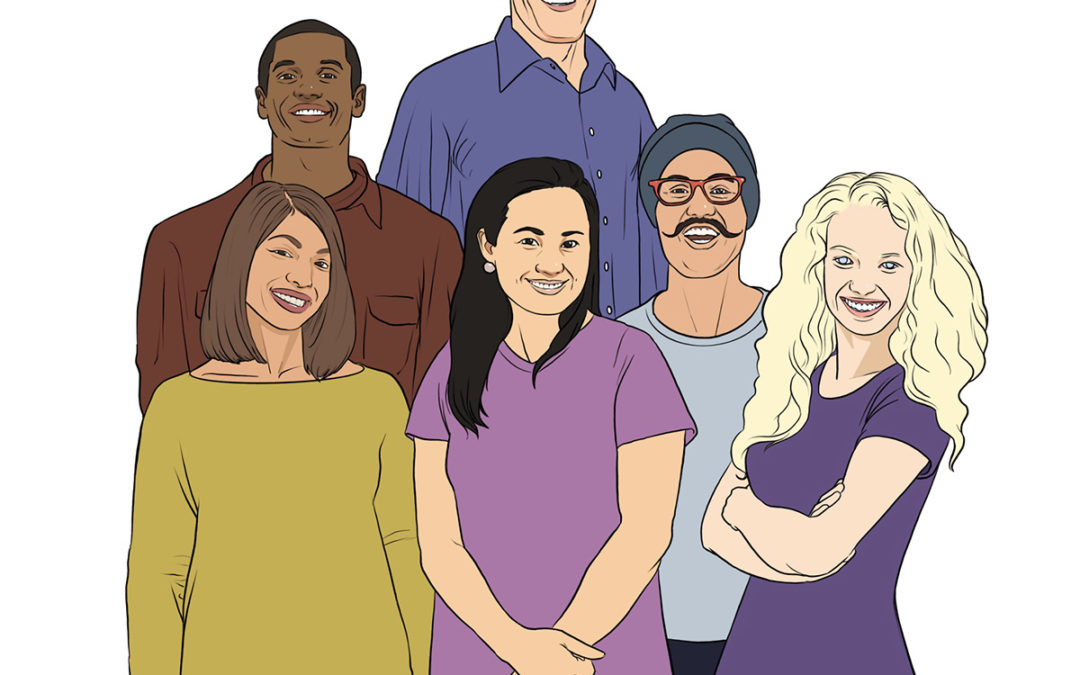
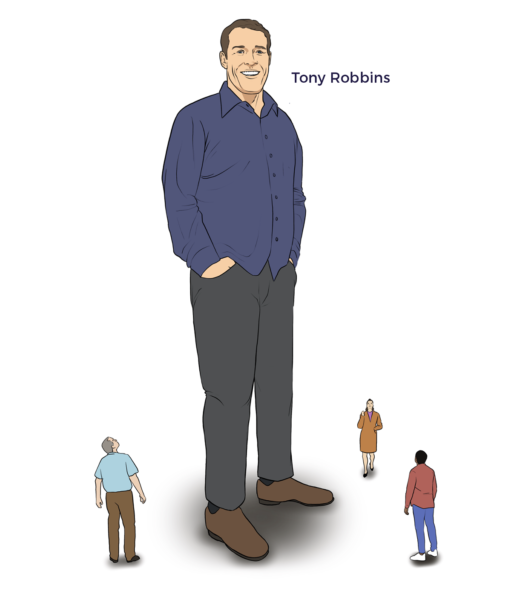
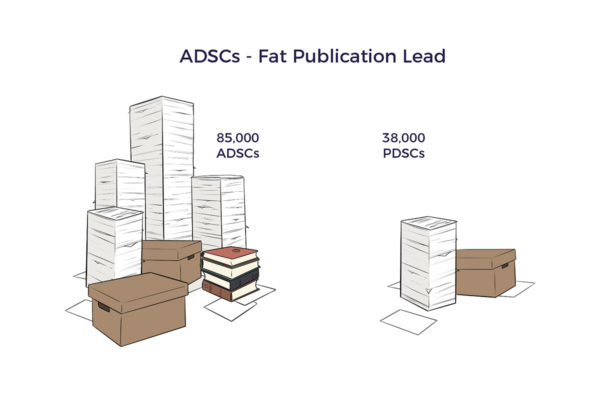
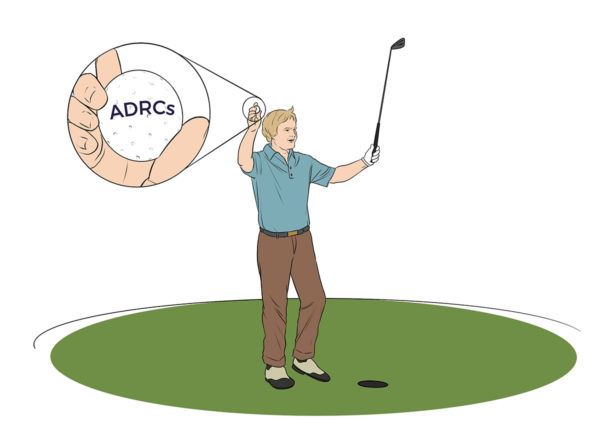 Apparemment, Tony ne savait pas
Apparemment, Tony ne savait pas 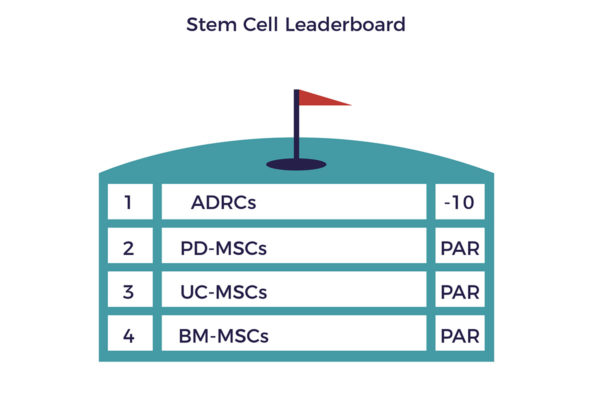 Les cellules souches sont l'engrais - la thérapie physique, l'exercice approprié et un mode de vie sain sont les jardiniers qui rétablissent la santé.
Les cellules souches sont l'engrais - la thérapie physique, l'exercice approprié et un mode de vie sain sont les jardiniers qui rétablissent la santé.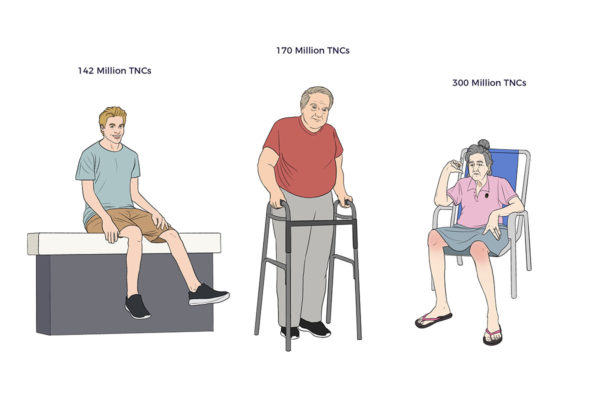 De l'autre côté de la médaille, le rendement d'un patient de 15 ans souffrant d'une lésion de la moelle épinière était tout à fait comparable à celui de Bob. Six mois après la thérapie cellulaire et plus d'un an après sa blessure catastrophique, le jeune homme a retrouvé un contrôle moteur bilatéral des muscles fléchisseurs de la hanche et des quadriceps. Les patients atteints de lésions de la moelle épinière selon les normes de soins habituelles atteignent un plateau après environ 12 mois - remarquablement, la trajectoire de ce jeune homme s'accélère.
De l'autre côté de la médaille, le rendement d'un patient de 15 ans souffrant d'une lésion de la moelle épinière était tout à fait comparable à celui de Bob. Six mois après la thérapie cellulaire et plus d'un an après sa blessure catastrophique, le jeune homme a retrouvé un contrôle moteur bilatéral des muscles fléchisseurs de la hanche et des quadriceps. Les patients atteints de lésions de la moelle épinière selon les normes de soins habituelles atteignent un plateau après environ 12 mois - remarquablement, la trajectoire de ce jeune homme s'accélère.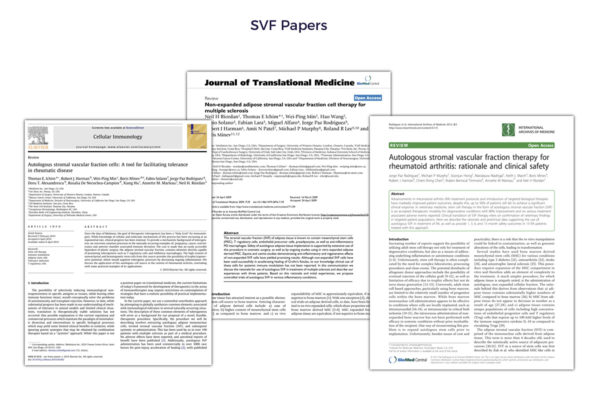 Des recherches récentes précisent que les cellules souches des donneurs sont "immuno-évasives, et non pas immuno-privilégiées", ce qui va à l'encontre des partisans de la thérapie cellulaire allogénique.
Des recherches récentes précisent que les cellules souches des donneurs sont "immuno-évasives, et non pas immuno-privilégiées", ce qui va à l'encontre des partisans de la thérapie cellulaire allogénique.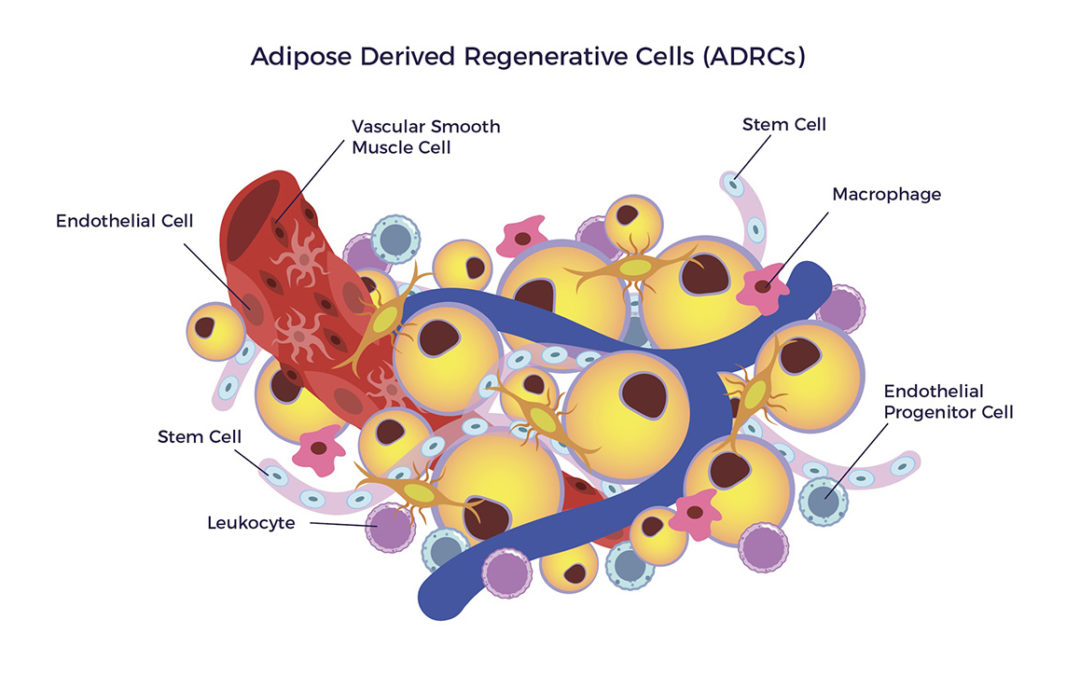
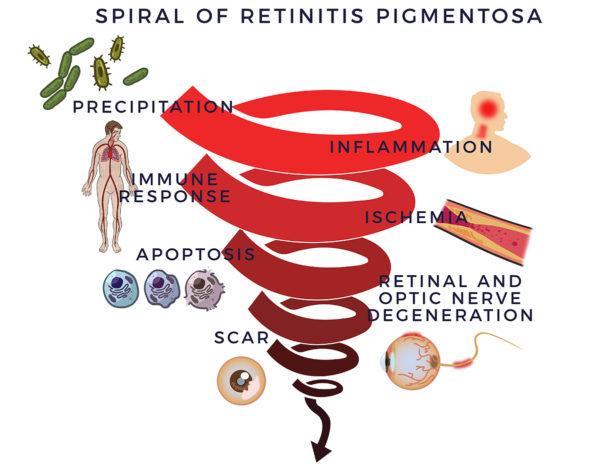 En 1857, le Dr Donders a identifié un groupe de troubles oculaires incurables qu'il a baptisé rétinite pigmentaire (RP). Mais ce n'était pas aussi simple que cela : Par la suite, les chercheurs ont découvert plus de 100 gènes pouvant contenir des mutations conduisant à la rétinite pigmentaire. Mais les anomalies génétiques ne clarifient pas tout ; dans la moitié des cas de RP, il n'y a pas d'antécédents familiaux ni d'explication.
En 1857, le Dr Donders a identifié un groupe de troubles oculaires incurables qu'il a baptisé rétinite pigmentaire (RP). Mais ce n'était pas aussi simple que cela : Par la suite, les chercheurs ont découvert plus de 100 gènes pouvant contenir des mutations conduisant à la rétinite pigmentaire. Mais les anomalies génétiques ne clarifient pas tout ; dans la moitié des cas de RP, il n'y a pas d'antécédents familiaux ni d'explication.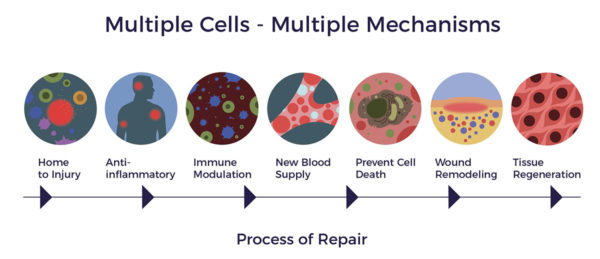
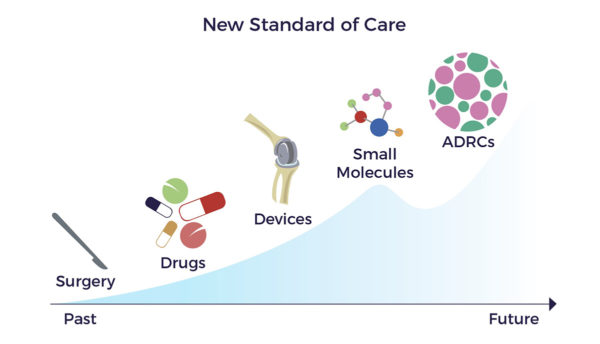 Les développeurs de médicaments et de thérapies géniques continuent de poursuivre le modèle "une molécule ou un gène pour une maladie" pour la RP, qui a échoué. Cette approche minimaliste n'a pas permis de produire un médicament ou une thérapie génique qui modifie la progression de la maladie ou améliore l'acuité visuelle corrigée (BCVA) des patients.
Les développeurs de médicaments et de thérapies géniques continuent de poursuivre le modèle "une molécule ou un gène pour une maladie" pour la RP, qui a échoué. Cette approche minimaliste n'a pas permis de produire un médicament ou une thérapie génique qui modifie la progression de la maladie ou améliore l'acuité visuelle corrigée (BCVA) des patients.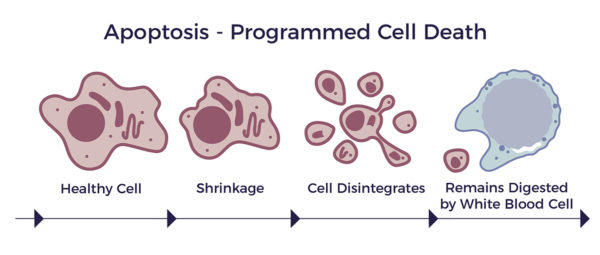

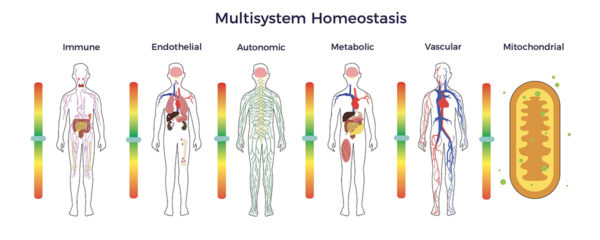 Les ADRC constituent une population hétérogène de cellules, comprenant des cellules souches mésenchymateuses, d'autres cellules progénitrices, des fibroblastes, des cellules régulatrices T et des macrophages. Le mélange comprend un pourcentage élevé de cellules endothéliales, de cellules progénitrices endothéliales, de macrophages et de leucocytes.
Les ADRC constituent une population hétérogène de cellules, comprenant des cellules souches mésenchymateuses, d'autres cellules progénitrices, des fibroblastes, des cellules régulatrices T et des macrophages. Le mélange comprend un pourcentage élevé de cellules endothéliales, de cellules progénitrices endothéliales, de macrophages et de leucocytes.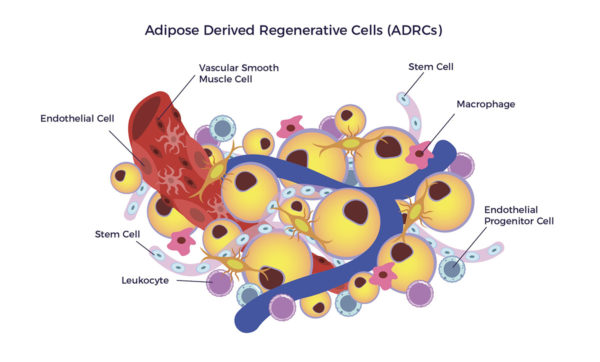 Après avoir détecté un signal inflammatoire, le sécrétome ADRC libère des centaines de cytokines et de facteurs de croissance dans le microenvironnement malade. Les cellules endogènes renvoient des signaux aux ADRC.
Après avoir détecté un signal inflammatoire, le sécrétome ADRC libère des centaines de cytokines et de facteurs de croissance dans le microenvironnement malade. Les cellules endogènes renvoient des signaux aux ADRC.
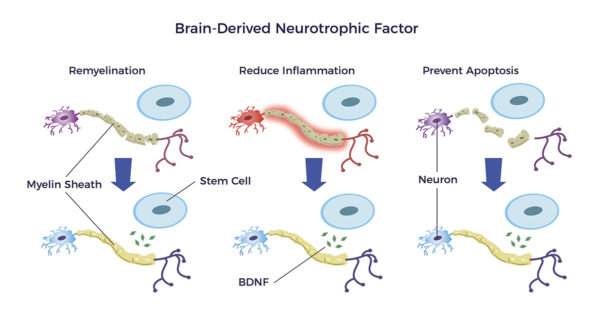
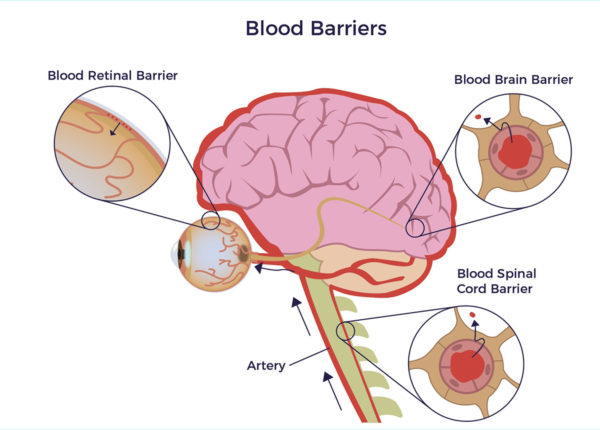 Perméabilité de la barrière hémato-rétinienne
Perméabilité de la barrière hémato-rétinienne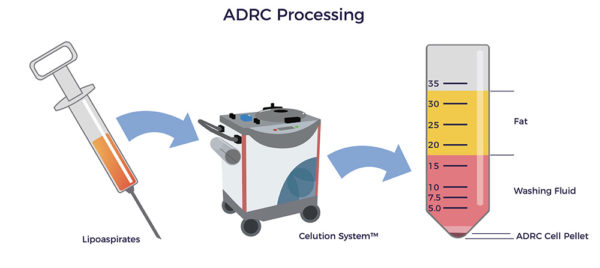 Plus de 40 pays ont approuvé l'utilisation clinique de Celution, dont le Royaume-Uni, l'Union européenne, le Japon, la Corée du Sud et la Nouvelle-Zélande. En outre, la FDA a approuvé Celution pour neuf essais cliniques.
Plus de 40 pays ont approuvé l'utilisation clinique de Celution, dont le Royaume-Uni, l'Union européenne, le Japon, la Corée du Sud et la Nouvelle-Zélande. En outre, la FDA a approuvé Celution pour neuf essais cliniques.
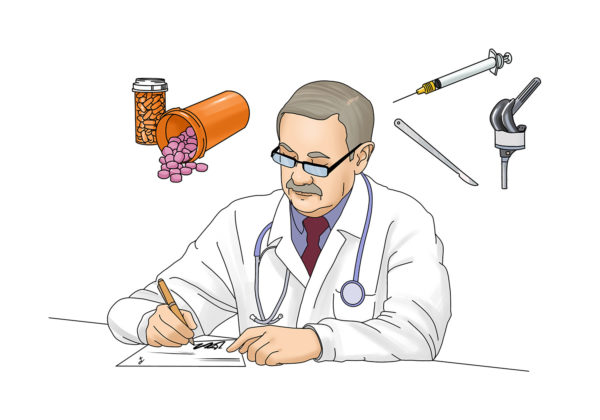 Or, la personne âgée moyenne consulte sept médecins et prend sept médicaments par an. Nous connaissons donc tous quelqu'un - ou nous sommes tous cette personne - dont la qualité de vie est médiocre.
Or, la personne âgée moyenne consulte sept médecins et prend sept médicaments par an. Nous connaissons donc tous quelqu'un - ou nous sommes tous cette personne - dont la qualité de vie est médiocre.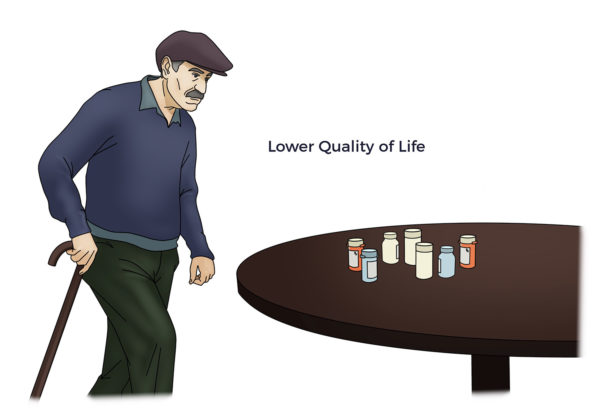 Les broscientifiques autoproclamés du biohacking se situent à l'autre extrémité du spectre.
Les broscientifiques autoproclamés du biohacking se situent à l'autre extrémité du spectre.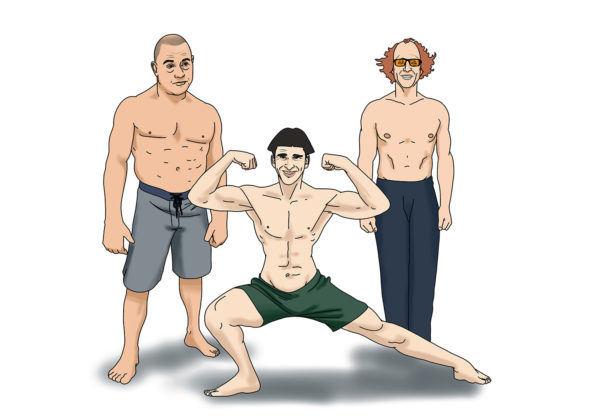 Si quelque chose est susceptible d'améliorer votre santé - aucune preuve n'est requise - l'un des broscientifiques le vendra ou en fera la promotion. Ce faisant, ils prétendent que leurs produits, équipements, livres, podcasts et drogues psychédéliques sont la solution à tous les problèmes, des maladies chroniques au vieillissement en bonne santé.
Si quelque chose est susceptible d'améliorer votre santé - aucune preuve n'est requise - l'un des broscientifiques le vendra ou en fera la promotion. Ce faisant, ils prétendent que leurs produits, équipements, livres, podcasts et drogues psychédéliques sont la solution à tous les problèmes, des maladies chroniques au vieillissement en bonne santé.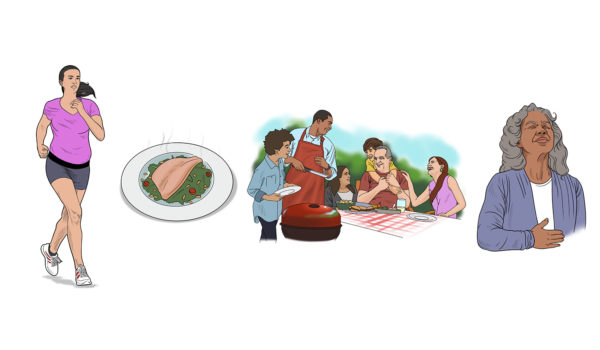
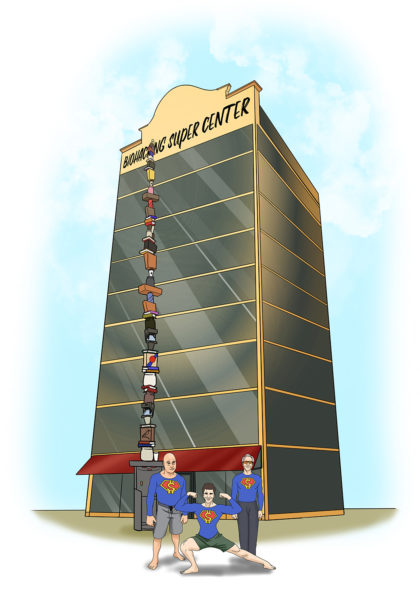 Tout comme la pharmacie, le biohacking est un gros business. Si l'on empilait les uns sur les autres tous les équipements, produits, suppléments, cafés, aliments, livres, supports de cours, documents de franchise, articles de blog et transcriptions que les trois grands commercialisent, on obtiendrait la hauteur d'un supermarché de 10 étages.
Tout comme la pharmacie, le biohacking est un gros business. Si l'on empilait les uns sur les autres tous les équipements, produits, suppléments, cafés, aliments, livres, supports de cours, documents de franchise, articles de blog et transcriptions que les trois grands commercialisent, on obtiendrait la hauteur d'un supermarché de 10 étages.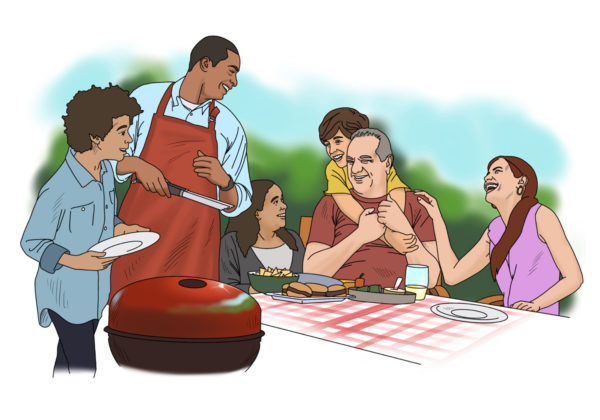 Les opposés polaires sont les vedettes de la formule "retour aux sources". Ce sont des gens ordinaires qui profitent de la vie jusqu'à 80, 90 et 100 ans avec des souvenirs intacts, un cœur en bonne santé et une vie sociale riche.
Les opposés polaires sont les vedettes de la formule "retour aux sources". Ce sont des gens ordinaires qui profitent de la vie jusqu'à 80, 90 et 100 ans avec des souvenirs intacts, un cœur en bonne santé et une vie sociale riche. A titre personnel, les piliers du Pouvoir de la Simplicité englobent l'avenir d'un vieillissement sain, heureux et digne. Et vous pouvez vous les offrir sans avoir à dépenser d'argent au Biohacking Superstore.
A titre personnel, les piliers du Pouvoir de la Simplicité englobent l'avenir d'un vieillissement sain, heureux et digne. Et vous pouvez vous les offrir sans avoir à dépenser d'argent au Biohacking Superstore.